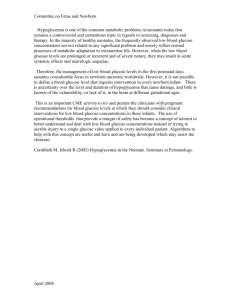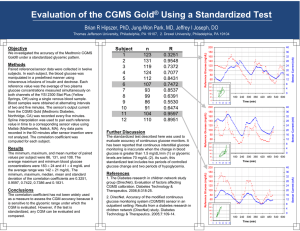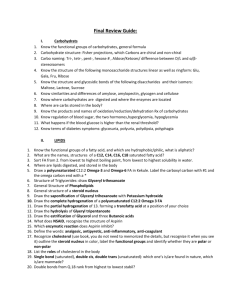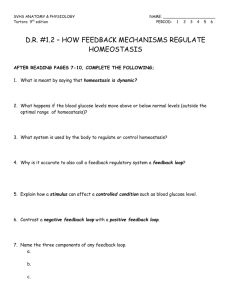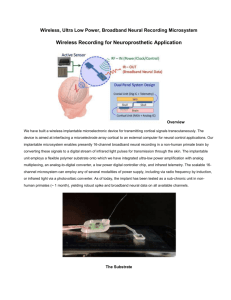A Wireless Implantable Microsystem for Continuous Blood Glucose
advertisement
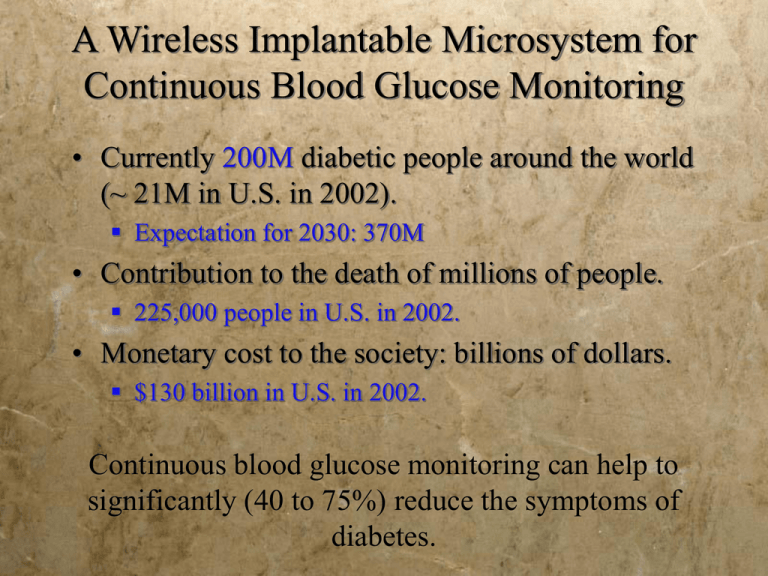
A Wireless Implantable Microsystem for Continuous Blood Glucose Monitoring • Currently 200M diabetic people around the world (~ 21M in U.S. in 2002). Expectation for 2030: 370M • Contribution to the death of millions of people. 225,000 people in U.S. in 2002. • Monetary cost to the society: billions of dollars. $130 billion in U.S. in 2002. Continuous blood glucose monitoring can help to significantly (40 to 75%) reduce the symptoms of diabetes. Problems of the Previous Works • Using the conventional glucose biosensors. Requirement for oxygen; Degradation of the sensor due to the production of hydrogen peroxide (short life-time); Interference from other chemical species. • Using battery for powering the implant Short life-time; Hazard of leakage. • Large Size Instability of the sensing environment; Difficulties in packaging. A New Wireless Implantable Microsystem • A new electrochemical glucose sensor. • Passive telemetry for data and power transfer between the implant and the external reader. • Small size (481 mm3).


